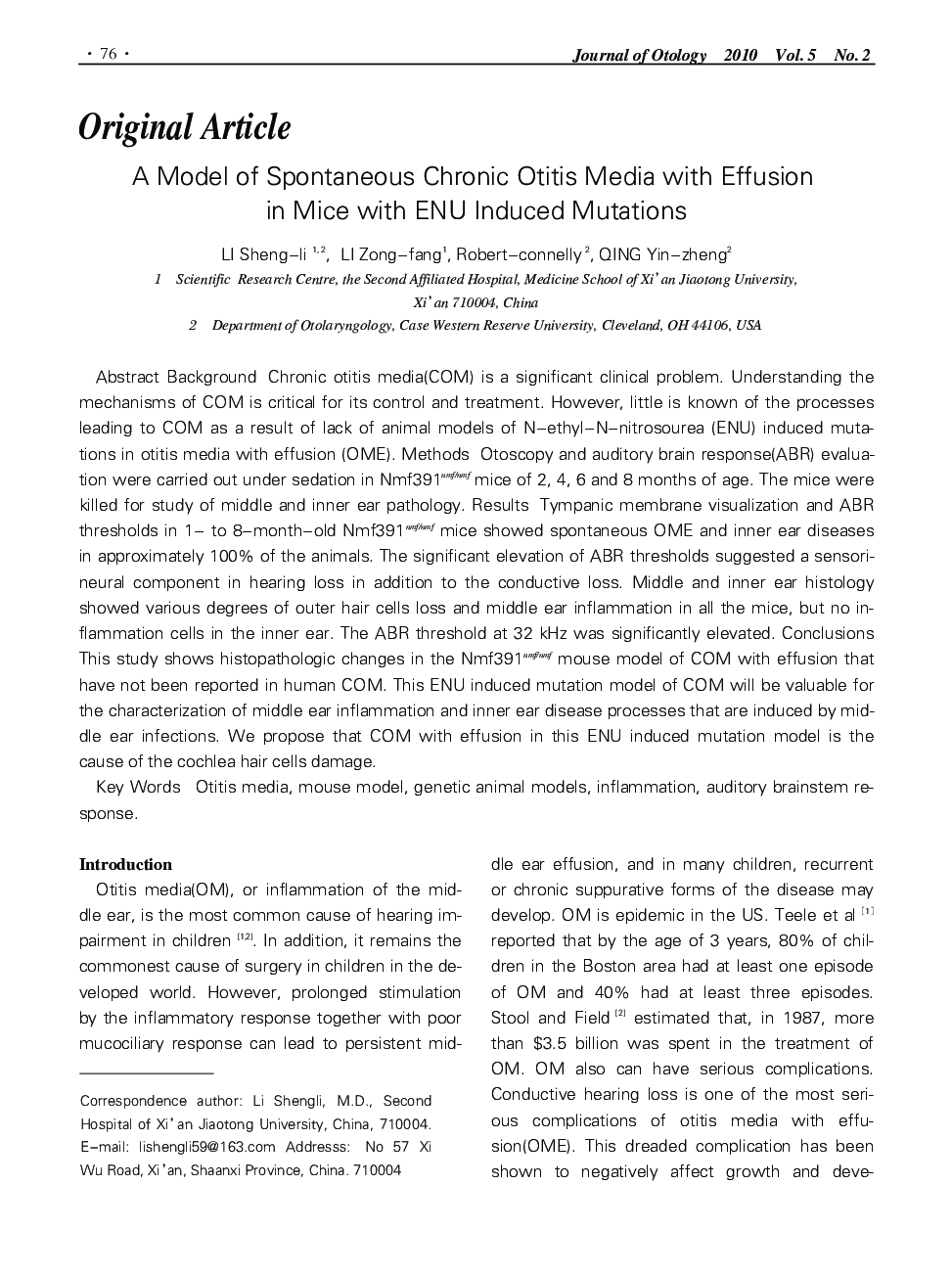| Article ID | Journal | Published Year | Pages | File Type |
|---|---|---|---|---|
| 4116784 | Journal of Otology | 2010 | 14 Pages |
BackgroundChronic otitis media(COM) is a significant clinical problem. Understanding the mechanisms of COM is critical for its control and treatment. However, little is known of the processes leading to COM as a result of lack of animal models of N–ethyl–N–nitrosourea(ENU)inducedmutations in otitis media with effusion (OME).MethodsOtoscopy and auditory brain response(ABR) evaluation were carried out under sedation in Nmf391mf/nmf mice of 2, 4, 6 and 8 months of age. The mice were killed for study of middle and inner ear pathology.ResultsTympanic membrane visualization and ABR thresholds in 1– to 8–month–old Nmf391nmf/nmfmice showed spontaneous OME and inner ear diseases in approximately 100% of the animals. The significant elevation of ABR thresholds suggested a sensorineural component in hearing loss in addition to the conductive loss. Middle and inner ear histology showed various degrees of outer hair cells loss and middle ear inflammation in all the mice, but no inflammation cells in the inner ear. The ABR threshold at 32 kHz was significantly elevated.ConclusionsThis study shows histopathologic changes in the Nmf391nmf/nmf mouse model of COM with effusion that have not been reported in human COM. This ENU induced mutation model of COM will be valuable for the characterization of middle ear inflammation and inner ear disease processes that are induced by middle ear infections. We propose that COM with effusion in this ENU induced mutation model is the cause of the cochlea hair cells damage.
